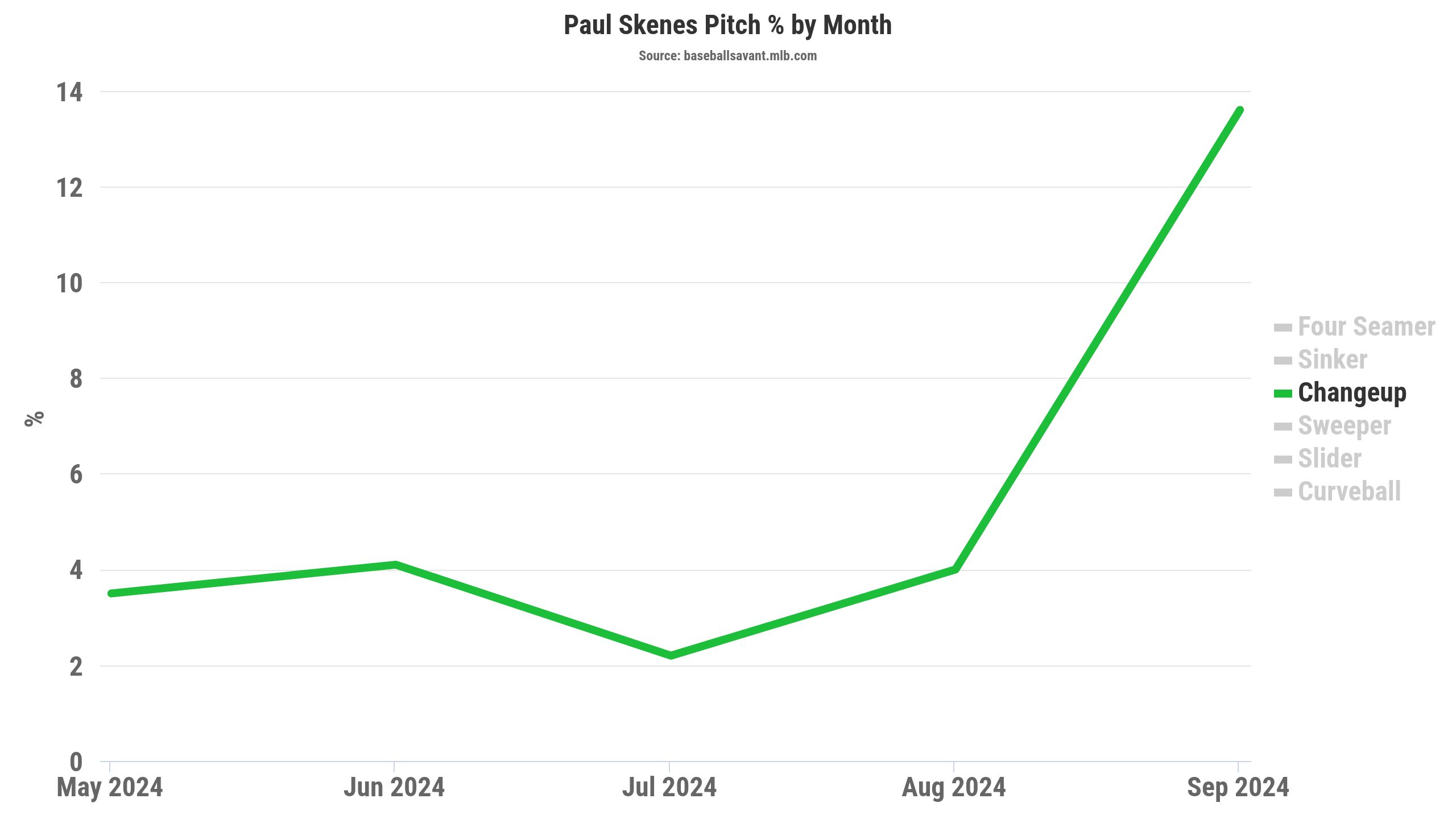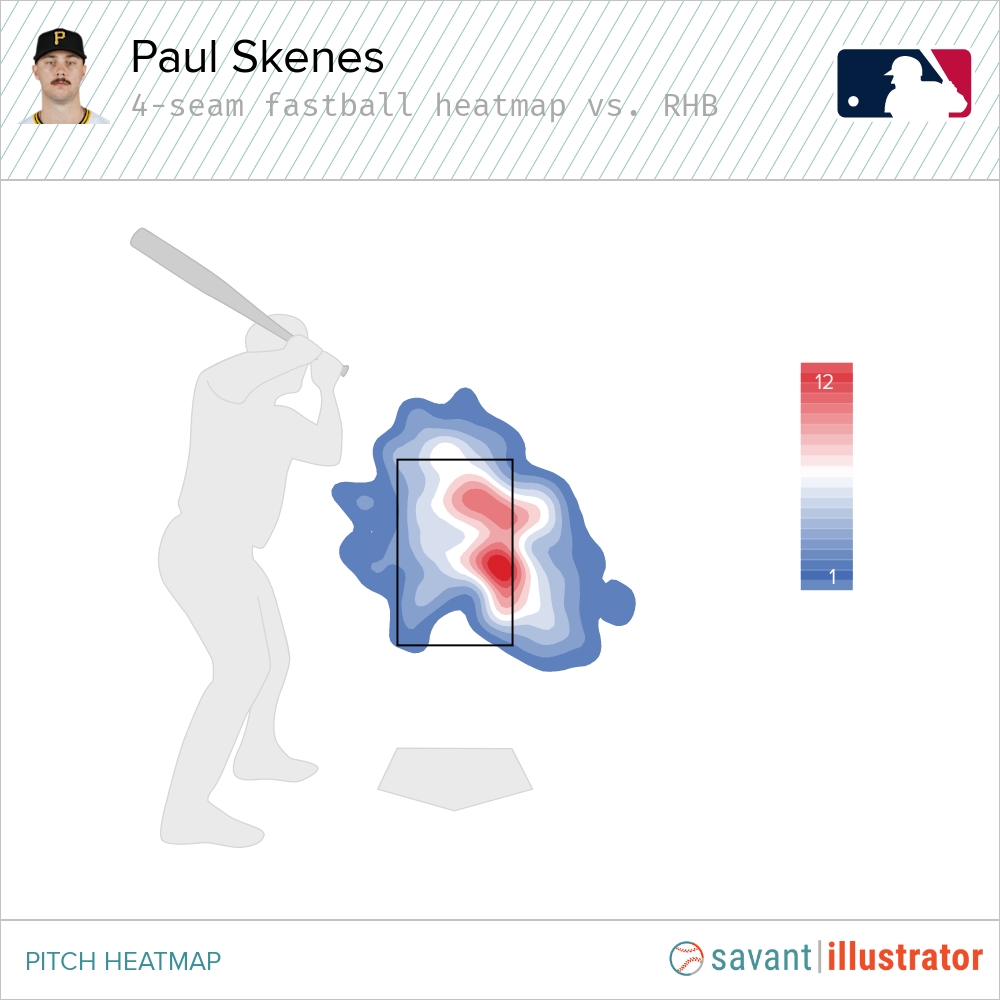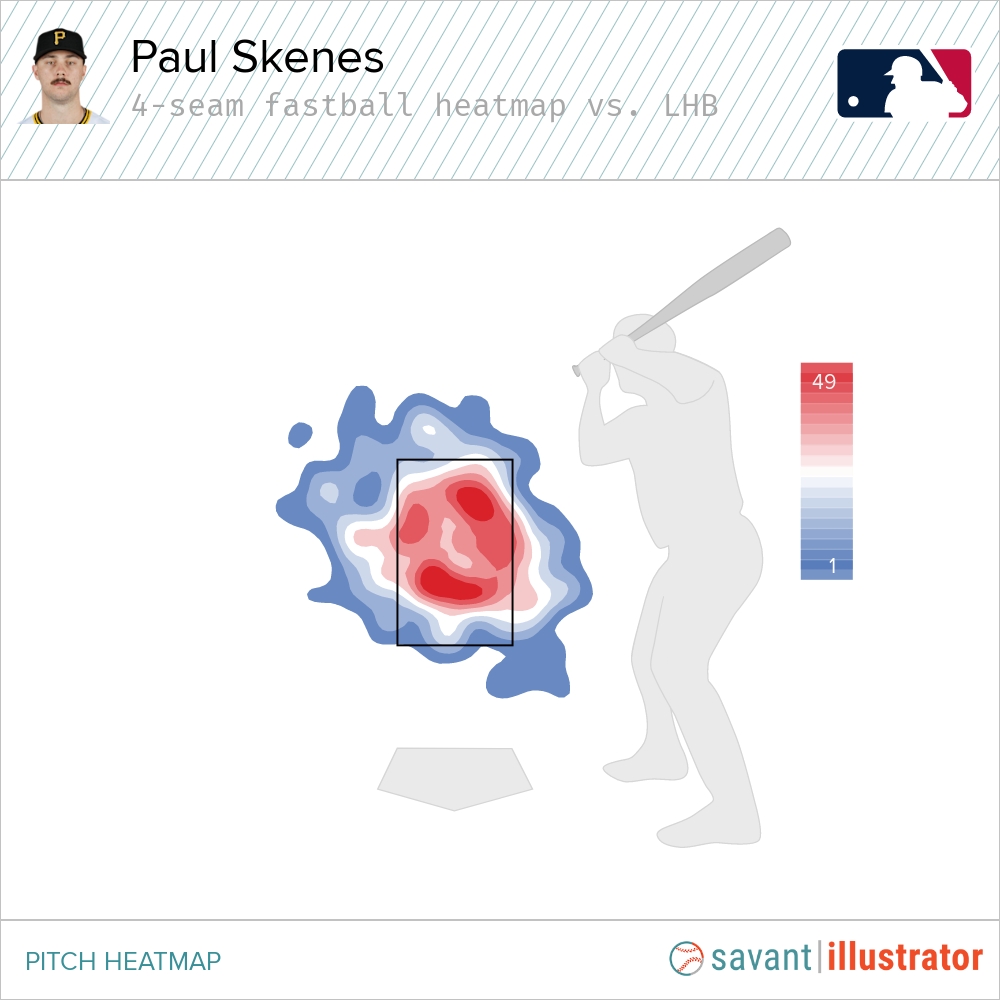Paul Skenes has already lived up to the hype. It took him all of one year to go from No. 1 Draft pick to one of the most dominant pitchers in the Major Leagues.
Now he's the National League Rookie of the Year (and a Cy Young Award finalist). But that's just the first chapter of his career.
Skenes' first full season in 2025 will just give him the chance to be even greater. By this time next year, the Pirates phenom might be the undisputed best pitcher in the world. This is how he can get there.
Here are three ways Skenes can take his game to even higher heights in 2025.
1) Embrace the splinker as a putaway pitch
Skenes' "splinker" -- his sinker/splitter hybrid that has mid-90s velocity like a sinker but drops off the table like a splitter -- was one of the nastiest pitches in baseball this season, and it took the big leagues by storm.
Classified by Statcast as a sinker, Skenes' splinker comes in at 94 mph … but it also drops over 30 inches on its way to the plate -- which is over seven inches more than comparable MLB sinkers drop. That's how it can function like a wipeout splitter, an "offspeed" pitch Skenes can throw off of his 100 mph fastball.
Skenes' splinker was the most valuable sinker in MLB in 2024. But there's one type of situation where he could let it rip even more: putaway counts.
Let's call those 0-2, 1-2 and 2-2 counts -- where Skenes would be going for the strikeout, but without the full-count risk of a walk.
The splinker was arguably Skenes' best putaway pitch. When Skenes threw a splinker in those putaway counts, he got the strikeout 27% of the time, higher than his four-seamer (19%) or any of his breaking pitches, his curveball (24%), sweeper (21%) or slider (10%). Hitters whiffed on 41% of their swings against his splinker in putaway counts, making it a much better swing-and-miss pitch than his fastball (21%), curve (33%), sweeper (28%) or slider (17%).
But Skenes only threw the splinker 13% of the time in putaway counts. That made it his No. 3 pitch in those situations, well behind his four-seamer (47%) and also his sweeper (15%). Skenes was much more likely to use his splinker in early counts or when he fell behind.
There is room for more two-strike splinkers in 2025. The whiff rate and putaway rate are there. Skenes had 31 strikeouts on splinkers as a rookie (compared to 79 on four-seamers). Look for more next season.
2) Keep leaning into his changeup
The splinker is not Skenes' only "offspeed" pitch. He also has a true changeup. It's not one of the first pitches you think of when you think of Skenes -- for most of the season, it was a little-used afterthought in his repertoire. But in September, he suddenly decided he was going to throw it. And it turned into his most unhittable pitch down the stretch.

Skenes' changeup in 2024
- May-August: 4% usage / 4 K (29% K%) / 11 whiffs (38% whiff rate)
- September: 14% usage / 16 K (73% K%) / 23 whiffs (70% whiff rate)
That makes you wonder why Skenes didn't show his changeup sooner. It has all the makings of another plus pitch for his arsenal.
Skenes' changeup averages 87 mph, giving him one extra step of velocity differential from the four-seamer (99 mph) to the splinker (94 mph) to the changeup. And it gets above-average movement in both directions -- both vertical drop and horizontal break -- but particularly horizontal. Skenes' changeup runs almost 18 inches to his arm side, even more than his four-seamer and splinker, which each get about 14 inches of run.
Skenes turned September into a testing ground for the changeup, and the test was a massive success. He was fearless throwing the changeup, even using it to attack right-handed hitters (pitchers often stay away from changeups to hitters of the same side).
Skenes threw 10 changeups to righties in September, after throwing just one, total, over the previous four months. Five of those 10 changeups got a swing and miss. Four were strikeouts, including two K's of Paul Goldschmidt.
If what he did down the stretch is any indication of what he does going forward, Skenes becomes a six-pitch pitcher: four-seamer, splinker, curveball, slider, sweeper, changeup. And all six pitches are nasty.
3) Bust righties up and in
Skenes' fastball dominates the outside edge against right-handed hitters -- a very Jacob deGrom-esque approach to power pitching.
Here's his four-seam fastball heatmap vs. righties this season:

It's a much more targeted approach than he took vs. left-handed hitters, against whom Skenes filled up the zone, throwing plenty of heaters up and down, in and out.

Against righties, there should be more room for Skenes to pound his fastball in on the hitter's hands, and go up-and-in to tie them up -- especially with his overpowering velocity and arm-side run.
Only 26% of the four-seamers Skenes threw to righties were inside fastballs -- over the inner third of the plate or farther in. Only 15% were up-and-in fastballs. Both of those were on the lower end for right-handed pitchers vs. right-handed hitters. And only five of his strikeouts vs. righties were on inside fastballs.
Maybe Skenes' fastball is overpowering enough, like deGrom's, that he can just hammer the outside edge, where it will blow away plenty of righties and set up his breaking stuff away against the rest.
But when your fastball sits 99 mph, frequently eclipses 100, and gets 14 inches of run -- six inches more than comparable MLB heaters -- you should be able to blow away those hitters up and in, too. Let's see if Skenes tries to take over the other side of the plate, too, in 2025.
